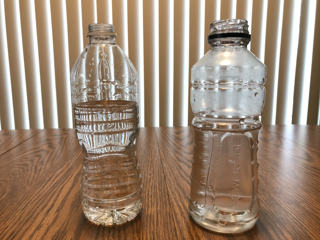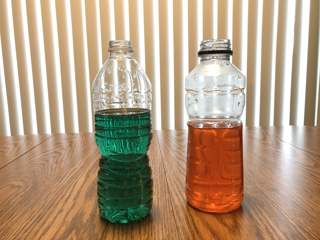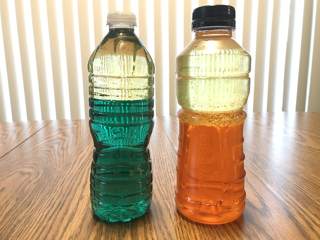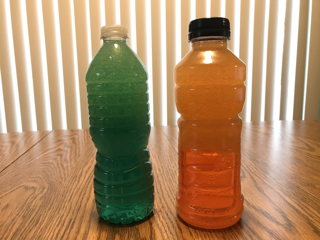Published March 30, 2020
Teaching Tuesdays: Density Jars
The Indiana State Museum and Historic Sites may be currently closed due to COVID-19 – but that doesn’t mean we can’t bring some of the museum to you!
On Tuesdays, we’re bringing families tons of educational content that’s easy for parents and their kids to do at home with materials you likely have on hand.
Today, we’re taking a look at one of the favorite activities: density jars!
Density can be a hard science concept to understand. It helps to think of density as the mass of an object and how much space it takes up, or the volume. For example, imagine two same-sized shoe boxes. One box has five feathers inside, and the other has 100 feathers. Which box is more dense? The one with 100 feathers, since it has more stuff (mass) taking up the same amount of space.
Oil is less dense than water, so what will happen when you try to mix them? Try this activity to find out!
Materials
- Recycled plastic bottle with cap
- Water
- Liquid cooking oil or mineral oil
- Food coloring
- Measuring Cup
- Funnel
Instructions:
1. Gather your materials and rinse the recycled plastic bottle and cap. Be sure to also remove any labels from the water bottle.

2. Fill the water bottle about half way to ¾ full with water.

3. Add a few drops of food coloring to the water. A little bit goes a long way, and remember: you can always add more!

4. Place the funnel into the plastic bottle, and pour the oil into the water bottle on top of the water. Fill up the bottle with oil almost to the top. Do not fill all the way to the top of the bottle, as you’ll need a little bit of air.

5. Tightly screw on the cap, then shake and observe what happens!

BONUS: For some extra fun, add some Alka-Seltzer tablets and see how the effect changes.
Tips for Parents
- This is a great opportunity to practice color mixing. For example, what colors do they need to add to make purple?
- During and after the activity, ask your child:
- What happens when the oil is poured on top of the water?
- What would happen to the bottle if it went into space? (check out the NASA video below for the answer!)
- If you shake it for 30 seconds, how long does it take to separate? What about if you shake it for a minute?
- What ideas do you want to try out next time?
Ready to continue exploring?
Check out the links below for some more cool activities and videos exploring density!
OK Go Music Video in Microgravity
Sink or Float?
- Fill a five gallon bucket ¾ full with water. Collect a variety of materials to test – water toys and balls work well, as does a can of regular soda and diet soda. Pick two items to test and guess which ones will sink or float, then gently place the items on top of the water. Was your hypothesis correct? This activity is best done outside.








